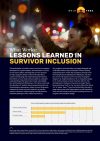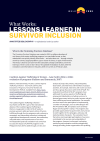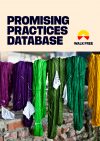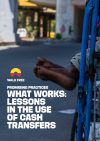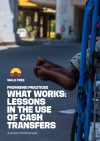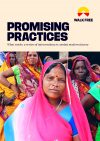Promising Practices
Curating a comprehensive global database of anti-slavery practices and outcomes to establish what works in the fight against modern slavery.
Promising Practices
If we are committed to eradicating modern slavery and achieving Sustainable Development Goal Target 8.7, we must gain a better understanding of “what works.” The Promising Practices Database aims to do just that: initially created in 2015, it collates evaluations of anti-slavery and counter trafficking programs in a searchable format to determine what works – and what does not – to eradicate modern slavery.
How we do it
The Database is designed so policy makers, donors, and program designers can quickly identify what works through a simple search by country, target population, type or sector of slavery, or type of intervention.
Following an update in 2020, the Database houses a total of 262 evaluations. These evaluations cover all forms of modern slavery, including human trafficking, forced labour, and forced marriage. It includes interventions such as community empowerment programs, cash transfers, training for police, awareness raising campaigns, and case management, among other initiatives and activities.
Our targets
- Produce policy papers drilling into specific interventions or types of modern slavery.
- Embed the database into the website to make it more user-friendly and accessible.
Promising Practices: Five years of lessons learned
Our Promising Practices Database was updated in 2020 and provides an opportunity to reflect on changes in anti-slavery and counter trafficking programming over the last five years.
Policy papers
Walk Free will release policy papers outlining lessons learned in anti-slavery and counter trafficking programming and evaluations contained within the Promising Practices Database.
Read our policy papers on cash transfers and survivor inclusion.
Contribute to our work
If you are a program designer or funder involved in conducting evaluations on modern slavery programs, you can contribute to our work.
If you host evaluations on your website, ensure navigation is clear and search engine optimisation allows for appearance in search results or format your evaluations so they can be hosted on search engines such as Google Scholar. Alternatively, you can submit your evaluation directly to our team.
If you have used the Promising Practices Database to inform your work, we would also love to hear from you. Please reach out to us via our email.
